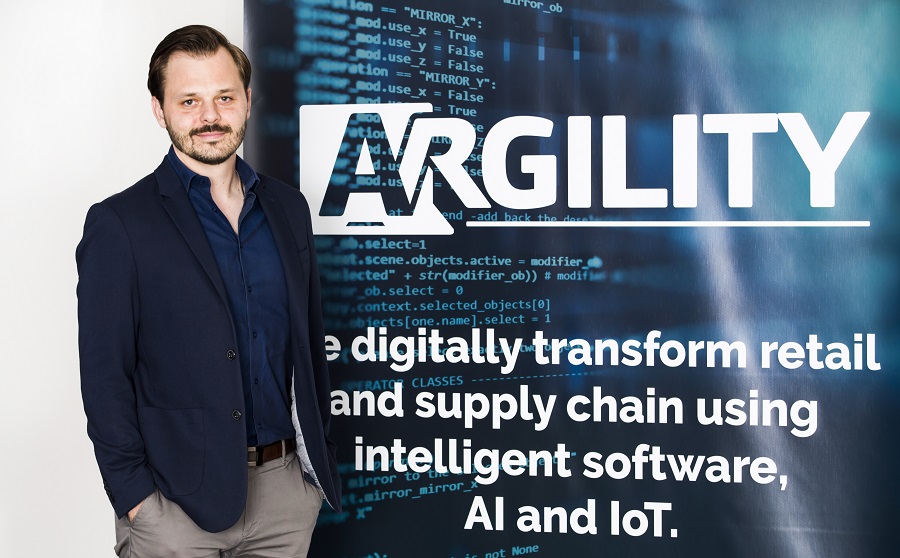
The likely effect of AI on the global job market
About 30% of all tasks are currently done by machines, with people performing the rest, but it’s believed the balance will change to 50-50 by 2025.
By Marko Salic, CEO of the Argility Technology Group
Artificial intelligence (AI) is no exception to the well-documented concerns surrounding new disruptive technologies and their effect on labour requirements. Gloomy predictions of job losses may well be correct.
Indeed, research supports this premise. However, the other side of the coin is that automation may lead to the creation of better jobs and reduce the need for physical labour – but there is a while to go before that happens and there are tangible business benefits to be gained right now by automating and optimising to remain competitive.
It is scarcely a few decades since the internet raised similar concerns as it grew. However, as it turned out, technology created millions of jobs and according to Forbes, comprises 10% of US GDP, with AI poised to create even greater growth in global economies.
It is interesting to note that PwC’s 22nd Global CEO survey revealed that 63% of CEOs surveyed believe AI will have a larger impact than the internet.
COVID driving the urgency for change
Of course, nobody foresaw the extraordinary events of 2020 with the declaration of a pandemic that threatened lives and livelihoods around the world. The economic fallout from the pandemic has been devastating, with millions out of a job due to the necessary closures of entire industries, hospitality, travel, etc, to contain the spread of the virus.
The arrival of COVID-19 has resulted in an acceleration of technological advances because of the urgent need to automate routine tasks – from contactless cashiers to robots delivering packages. In this environment, many are concerned that AI will drive significant automation in the coming decades, leading some to fear it will take their jobs.
It is reported that the US shed around 40 million jobs at the peak of the pandemic, and while some have come back, others will never reappear. One group of economists estimates that 42% of the jobs lost are gone forever.
Without a strategy, AI solutions risk never making it into production.
So, it is understandable that there is concern that this will be followed by more job losses as machines take away even more jobs from workers. The World Economic Forum (WEF) reports that automation will supplant about 85 million jobs by 2025.
However, this report is anything but gloom and doom as it goes on to note there is little to be concerned about as its analysis predicts the future tech-driven economy will create 97 million new jobs.
The WEF report reveals that currently, approximately 30% of all tasks are done by machines − with people performing the rest. However, by 2025, it’s believed the balance will dramatically change to a 50-50 combination of humans and machines.
All reports appear to agree on one thing and that is that AI will create more jobs than it destroys. AI is incredibly efficient at automating and optimising, but it does not do judgement – the latter requires human intelligence.
The PwC report notes that AI, robotics and other forms of smart automation have the potential to bring great economic benefits, contributing up to $15 trillion to the global GDP by 2030, but with a high human cost. PwC says this extra wealth will also generate demand for many new types of jobs.
So, it is apparent that the emergence of ever-new AI-driven technologies are not only powering the fourth industrial revolution and changing the way we work and live, but are predicted to create more jobs than they displace. This in turn will require new skills and necessitate significant commercial and governmental investment in upskilling and reskilling of workforces.
Productivity gains
In the short-term, it appears the biggest economic positive to come out of automation and AI will come from productivity gains due to the automation of routine tasks. This is said to augment employees’ capabilities and free them to focus on more stimulating and higher value-adding work.
Capital-intensive sectors such as manufacturing and transport are, therefore, likely to see the largest efficiency outputs from AI because much of their operational processes are ripe for automation.
I would like to conclude by listing firstly what companies are likely to gain by implementing AI programmes, and secondly, what they need to have in place to get their AI strategy off the ground.
- Productivity gains from businesses automating processes (including the use of robots and autonomous vehicles).
- Productivity gains from businesses augmenting their existing labour force with AI technologies (assisted and augmented intelligence).
- Increased consumer demand resulting from the availability of personalised and/or higher-quality AI-enhanced products and services.
Has the company performed a readiness assessment? One source notes that without the following, the AI programme will hit a stall button:
- Culture of innovation − businesses must be fearless towards embracing innovation and taking risks.
- Buy-in throughout the organisation – from all levels of management and staff − is crucial.
- Sufficient understanding of the quality and quantity of data on-hand – data is available in a myriad of forms, but without all types of data being considered, the algorithms cannot learn and interpret successfully. Data is the fuel that powers all AI.
- Strategy − without a strategy, AI solutions risk never making it into production. Having the winning lottery numbers is pointless if you don’t own a ticket.
- The right technologies − cloud-based computing and storage technologies are critical for AI programmes to produce effectively. AI workloads require an enormous amount of processing power.
I would like to endorse the foregoing as essential to the implementation of an AI programme. Therefore, start with an AI readiness assessment because if the company is not ready and launches into it, the odds of success diminish significantly.
Lastly, seek advice from an expert source – either by sourcing an AI strategist to work in-house or partnering with specialists in the arena.
Source: IT Web
Marko Salic is CEO of the Argility Technology Group, a software development group with a history that spans almost four decades, predominantly in the retail and supply chain sectors.
Salic has over 20 years’ industry experience, stemming from software development and architecture through to business development, management and strategy. He spent 15 of those years at Argility creating some of the company’s most innovative solutions and products.
His passion lies in the focus on new technologies and next-generation innovative solutions that will take various cross-industry players to the next level. Coming from a strong technical background, Salic’s expertise lies in understanding the challenges modern businesses face and the best way to solve them by applying modern technology and innovation.
In his leadership of Argility, he is shaping next-level client solutions that will address the need for businesses to digitally transform and provide a hyper-personalised omni-channel customer experience to manage digital disruption and stay relevant.
